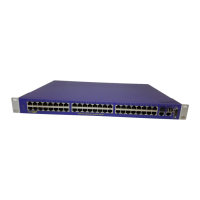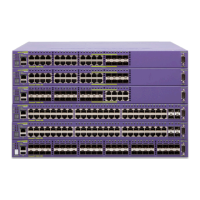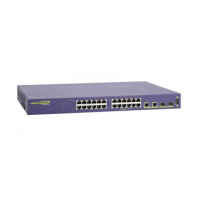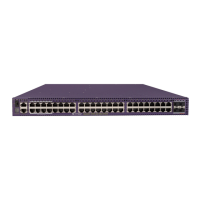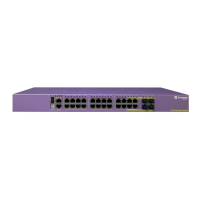78 Summit 300-48 Switch Software User Guide
Wireless Networking
Managing the Altitude 300
It is not necessary to configure the individual Altitude 300 ports. You set port attributes on the Summit
300-48 switch, copying them as needed to new ports that you configure. Each time you make a change
to wireless configuration on the switch, that change is implemented in the wireless network. Upgrading
wireless software becomes extremely easy, since it is only necessary to upgrade the switch, and not the
Altitude 300s.
Device management is flexible. From the management system you can enable and disable individual
wireless ports or sets of ports based on time, user, or location. You manage the wireless ports from the
wired IP network.
Profiles are available for security and RF parameters. Profiles function as templates, eliminating the
need to issue repetitive commands and thereby simplifying the process of updating configuration
information over multiple ports. You assign profiles to each interface (A or G) on a port and share the
profiles across ports. Unless otherwise specified, a default profile is automatically assigned to each new
wireless port.
Follow this process to configure wireless ports on the Summit 300-48 switch:
1 Designate a VLAN as the wireless management VLAN, or use the default management VLAN. Make
sure that the VLAN port is untagged between the switch and the Altitude 300. Assign IP addresses
on this VLAN for each wireless port.
2 Create RF-profiles.
3 Create security profiles and configure security parameters for each. The security profile includes
ess-name.
4 Configure wireless ports on the switch by assigning RF profiles and security profiles.
5 Configure a specific channel (determined from a site survey), if desired, on each interface. If you do
not configure a specific channel, the switch auto-selects the channel with the least interference.
6 Connect the Altitude 300.
After this process is complete, clients can access your network through the Altitude 300.
Wireless Show Commands
Use the show commands listed in Table 21 to display information on wireless port configuration, RF
profiles, security profiles, and stations.
Table 21: Wireless Show Commands
Command Description
show wireless ports <portlist> interface [1 | 2] rf-status
{detail}
Lists data rates and ESS name for the selected
port and interface. The optional keyword, detail,
provides more in-depth information.
show wireless ports <portlist> interface [1 | 2]
security-status [detail}
Lists WEP, authentication, dot1x, and guest mode
information for the selected port and interface. The
optional keyword, detail, provides more in-depth
information.
show wireless config Lists the country, type of management access,
management VLAN, and gateway.

